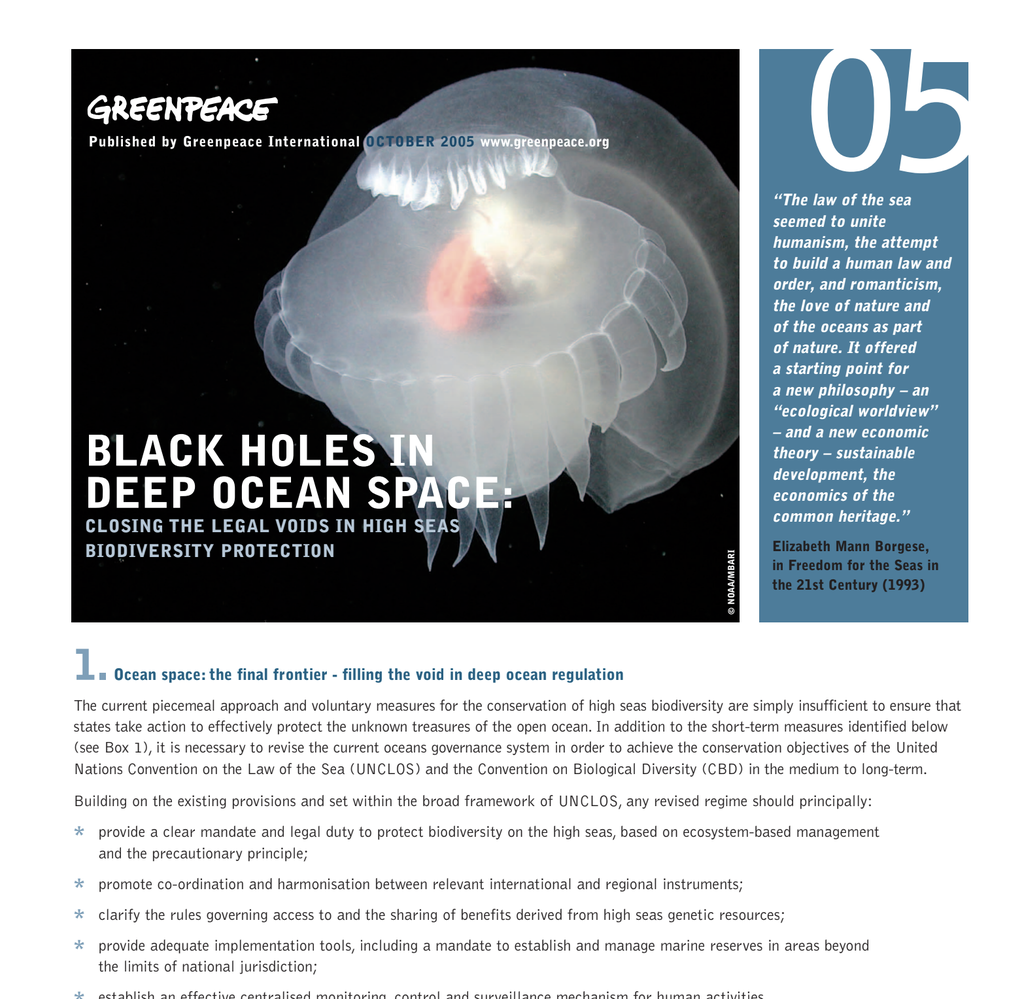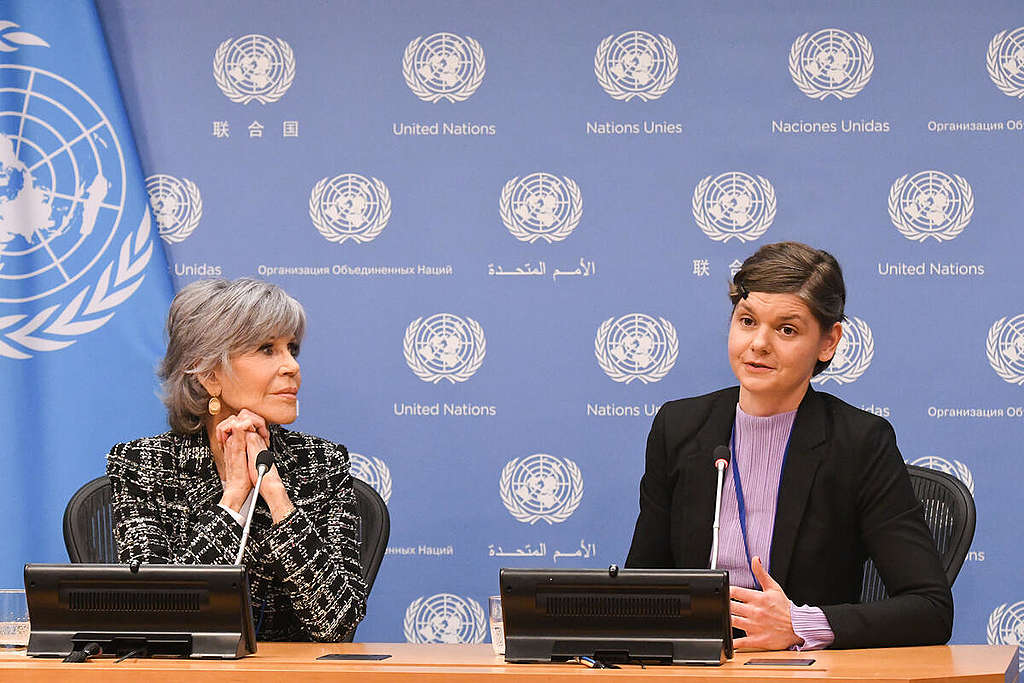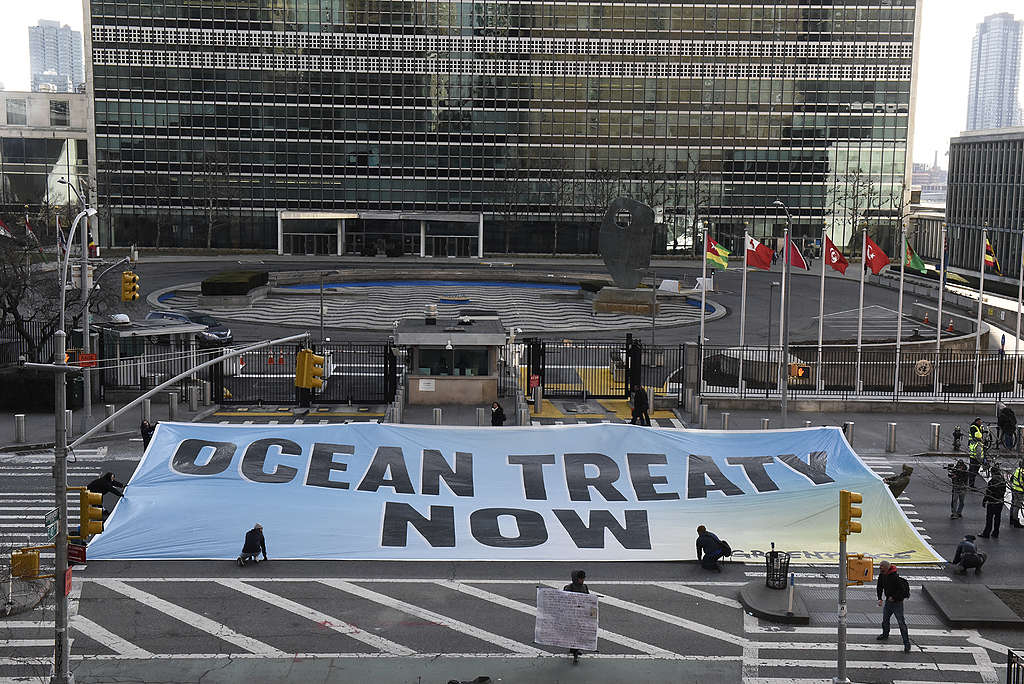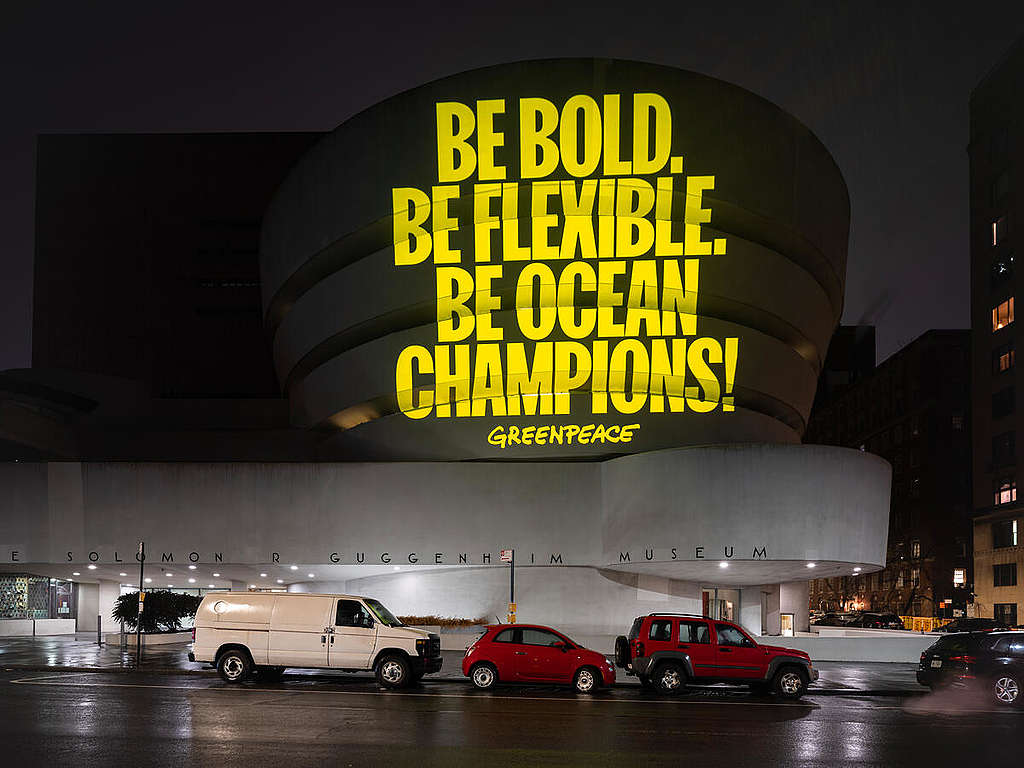On March 4th, 2023, after years of talks, delay and emotional rollercoaster, governments finally secured a Global Ocean Treaty.
An historic Global Ocean Treaty has finally been agreed at the United Nations after almost two decades of negotiations. This is a huge moment for conservation and a hopeful sign that in a divided world, protecting nature for the benefit of all people can triumph over geopolitics.
The very first Greenpeace briefing on this topic was written way back in 2005! And after years and years of campaigning by Greenpeace and our allies plus a tense final week of negotiations, world leaders finally put aside their differences for a moment and secured a Global Ocean Treaty.
 2005 Greenpeace Oceans briefing
2005 Greenpeace Oceans briefingThis Treaty is the biggest conservation victory ever and provides a pathway to creating fully and highly protected ocean areas across the world’s oceans. Here’s a quick look at what’s been accomplished, what it took to get here, and what comes next:
What does a Global Ocean Treaty actually do?
The new Global Ocean Treaty opens the door to the creation of a network of sanctuaries across the globe, areas where fragile ecosystems and marine life can recover and thrive, by keeping the 30×30 target – protecting 30% of the world’s oceans by 2030 – alive. Without a Treaty, there is no legal route to protecting large areas of international waters in ocean sanctuaries.
 Jane Fonda (l) attends a press briefing with Laura Meller (r), Oceans Campaigner and Polar Advisor at Greenpeace Nordic and Hervé Berville (not seen in photograph), the Secretary of State for the Sea for France at the United Nations in New York, during the resumed IGC5 negotiations. © Stephanie Keith / Greenpeace
Jane Fonda (l) attends a press briefing with Laura Meller (r), Oceans Campaigner and Polar Advisor at Greenpeace Nordic and Hervé Berville (not seen in photograph), the Secretary of State for the Sea for France at the United Nations in New York, during the resumed IGC5 negotiations. © Stephanie Keith / GreenpeaceWe need healthy oceans, which help combat climate change by locking away carbon, and provide food security and livelihoods to more than 3 billion people, the vast majority of whom are in the Global South.
How did we get here?
Key players were civil society. This isn’t just a victory for Greenpeace but so many organisations big and small who worked tirelessly over decades to build an incredible movement of ocean champions.
Delegates from governments around the world, who despite a lack of sleep, also worked incredibly hard to get an agreement over the line. Small Island States have shown leadership throughout the process, and the broad G77 group led the way in ensuring the Treaty can be put into practice in a fair and equitable way. The EU, US and UK, and China were key players in brokering the deal. Countries showed a willingness to compromise in the final days of talks, and built coalitions instead of sowing division.
 Greenpeace USA activists unfurl a giant banner reading ‘ Ocean Treaty Now!’ To send a clear message to delegates at the United Nations in New York at the start of the second week of the resumed IGC5 negotiations. © Stephanie Keith / Greenpeace
Greenpeace USA activists unfurl a giant banner reading ‘ Ocean Treaty Now!’ To send a clear message to delegates at the United Nations in New York at the start of the second week of the resumed IGC5 negotiations. © Stephanie Keith / GreenpeaceOne thing is for certain, it wouldn’t have been possible without years of relentless people power efforts. 5,540,513 people from around the world signed the petition, building a movement that protects our oceans and the billions who depend on them.
Campaigning to save life on our planet can sometimes feel like a daunting task, and it’s easy to become disheartened.The very first Greenpeace briefing on this topic was written way back in 2005! The treaty has had many names over the years, but the core goal remained the same – we needed oceans to be protected. This monumental win for ocean protection reminds us that taking action makes a difference and that people power works!
 Greenpeace USA activists project a message reading “Be Bold. Be Flexible. Be Ocean Champions!” onto the iconic Guggenheim Museum to send a clear message to delegates at the United Nations in New York during the second week of the resumed IGC5 negotiations. © Greenpeace
Greenpeace USA activists project a message reading “Be Bold. Be Flexible. Be Ocean Champions!” onto the iconic Guggenheim Museum to send a clear message to delegates at the United Nations in New York during the second week of the resumed IGC5 negotiations. © GreenpeaceWhat comes next?
The text will now go through technical editing and translation, before officially being adopted at another session by member states. While there are still major issues in the text, it is a workable Treaty that is a starting point for protecting 30% of the world’s oceans.
 Sunrise on board the Arctic Sunrise on January 29 2023. © Chris J Ratcliffe / Greenpeace
Sunrise on board the Arctic Sunrise on January 29 2023. © Chris J Ratcliffe / GreenpeaceThere will be more to do to protect our oceans, and put these promises into practice, but for now, let’s take a minute to appreciate what together we have achieved.
Share the video and tell others the good news.
Thanks for all you have done to help make this victory possible!

 1 year ago
76
1 year ago
76
 (@greenpeace)
(@greenpeace)

